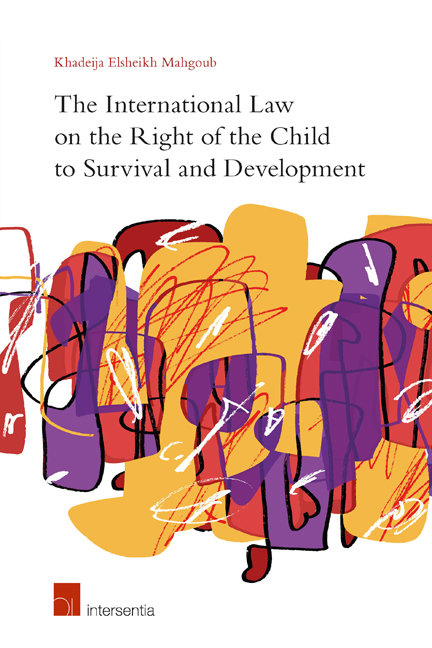Book contents
- Frontmatter
- Acknowledgements
- Contents
- Introduction
- Chapter 1 Historical Background
- Chapter 2 Current and Possible Interpretations of Article 6(2). Analytical Perspectives to the Work of the Committee on the Rights of the Child
- Chapter 3 The Nature of Article 6(2) on the Survival and Development of the Child
- Chapter 4 The Survival and Development of the Child and the Child's Human Dignity
- Chapter 5 Who is Responsible? The Obligation of the State Party to Create Measures and Conditions Necessary for the Survival and Development of the Child
- Chapter 6 Case Studies on Article 6(2)
- Conclusion
- Bibliography
- Official Documents
Chapter 4 - The Survival and Development of the Child and the Child's Human Dignity
Published online by Cambridge University Press: 28 November 2017
- Frontmatter
- Acknowledgements
- Contents
- Introduction
- Chapter 1 Historical Background
- Chapter 2 Current and Possible Interpretations of Article 6(2). Analytical Perspectives to the Work of the Committee on the Rights of the Child
- Chapter 3 The Nature of Article 6(2) on the Survival and Development of the Child
- Chapter 4 The Survival and Development of the Child and the Child's Human Dignity
- Chapter 5 Who is Responsible? The Obligation of the State Party to Create Measures and Conditions Necessary for the Survival and Development of the Child
- Chapter 6 Case Studies on Article 6(2)
- Conclusion
- Bibliography
- Official Documents
Summary
‘Since when have you turned men into slaves, whereas they are born free of their mothers?’
Caliph Omar Ibn Alkhattab, seventh centuryINTRODUCTION
In its general guidelines for periodic reports, the Committee on the Rights of the Child states that article 6 of the Convention on the Rights of the Child (CRC) should be implemented in a manner that is compatible with the human dignity of the child. Precisely, the Committee on the Rights of the Child asks the States Parties to the Convention on the Rights of the Child to create a suitable environment in order to ensure to the maximum extent possible the survival and development of the child in a way that is compatible with the child's human dignity:
Please describe specific measures taken to guarantee the child's right to life and to create an environment conducive to ensuring to the maximum extent possible the survival and development of the child, including physical, mental, spiritual, moral, psychological and social development, in a manner compatible with human dignity, and to prepare the child for an individual life in a free society.
This chapter studies the interrelationship between the human dignity of the child and article 6(2) of the CRC on the right of the child to survival and development. The chapter starts with an identification of the concept of human dignity in the context of article 6(2). Following this, the chapter highlights the universal importance of the concept of human dignity, by highlighting the importance of human dignity in various cultural and religious backgrounds. This is also achieved by focusing on some international and domestic legal documents and constitutions. The chapter highlights the importance of the concept as a base or foundation for human rights. Later there is more detailed discussion on the relationship between article 6(2) and the concept of human dignity. As pointed out in Chapter 3, under the Convention on the Rights of the Child, article 6(2) has various capacities, e.g., the general principle capacity, the aim capacity, the qualifying factor capacity and the right capacity. This chapter discusses the interaction between the human dignity of the child and article 6(2) under various capacities.
- Type
- Chapter
- Information
- Publisher: IntersentiaPrint publication year: 2015



